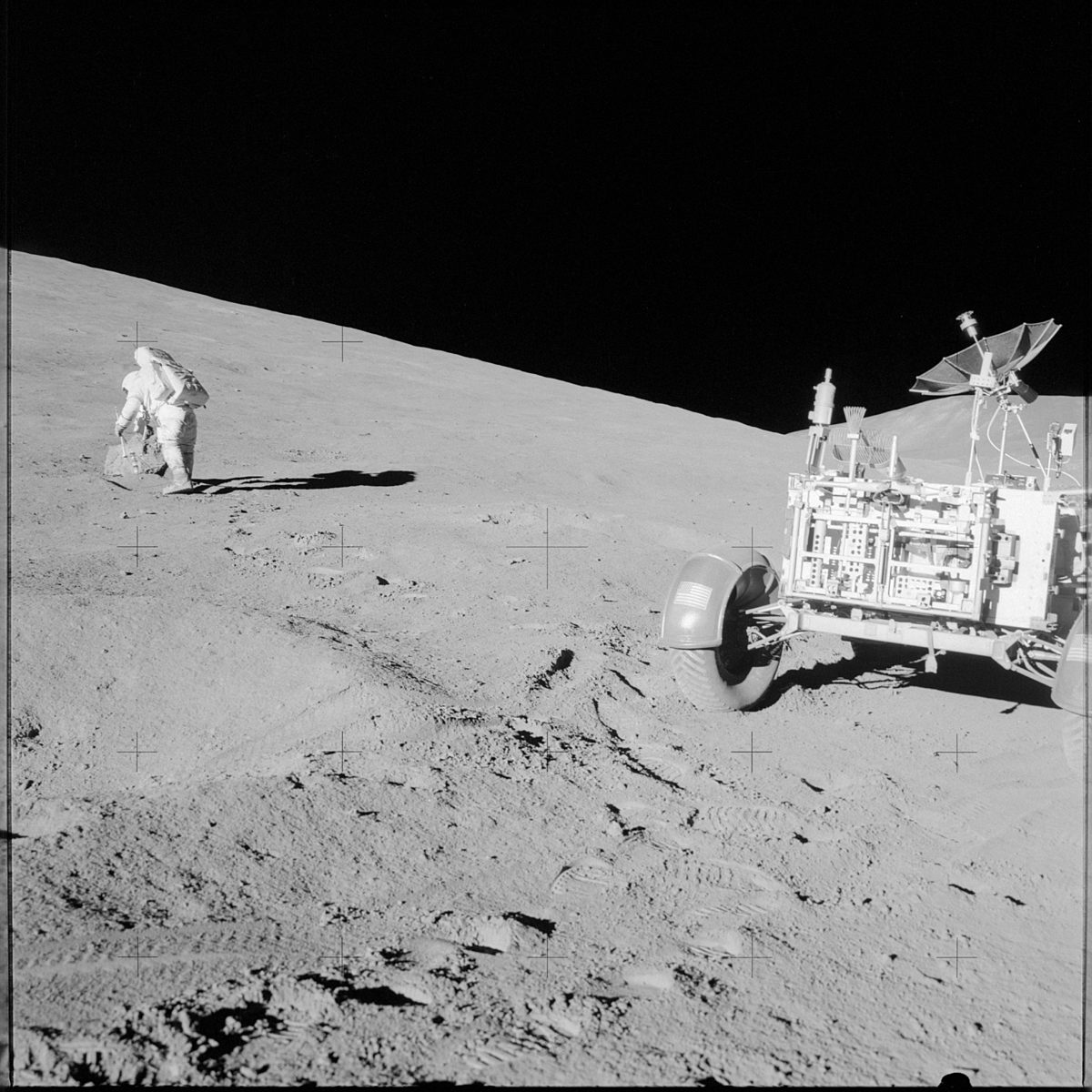Apollo 13 was the 3rd attempt to land humans on the Moon and the 1st to fail. Fifty-six hours into the mission, when the crew was more than 320,000 kilometers (200,000 miles) from Earth, an explosion within the Apollo Service Module's oxygen tank disabled the primary spacecraft, forcing the crew to take shelter in the attached Lunar Module. Unable to land, the crew of Apollo 13 changed their course to rapidly slingshot around the Moon and return to Earth. Three days after the accident, the astronauts safely re-entered Earth's atmosphere and splashed down into the Pacific Ocean.
Despite flagging interest in the Apollo program at the time, the so-called "successful failure" of Apollo 13 engaged worldwide interest, demonstrated the capability of the crew and mission support teams, and came to represent a defining moment in NASA history.
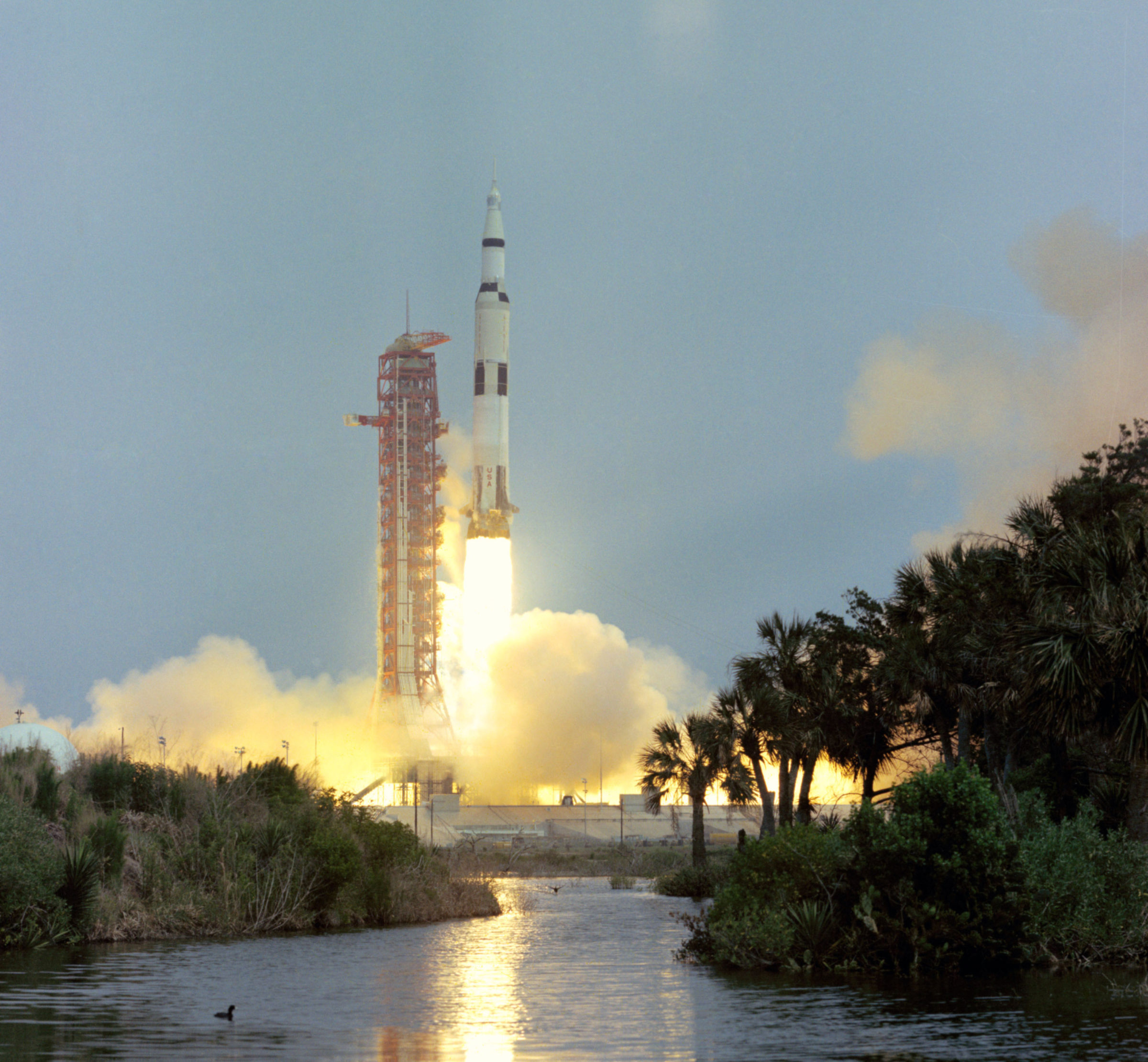
Apollo 13 launched on a picture-perfect spring day on 11 April 1970. Jim Lovell, who had previously orbited the Moon on Apollo 8, served as commander. He was joined by Lunar Module pilot Fred Haise and Command Module pilot Jack Swigert, a backup crewmember who replaced the original Command Module pilot, Ken Mattingly, just two days prior to launch. Mattingly had been exposed to rubella and did not have a previous immunity to the disease.
Despite an early shutdown of one of the Saturn V rocket's second-stage engines during launch, Apollo 13 appeared to proceed normally. Just hours after reaching Earth orbit, the crew initiated the trans-lunar injection burn of the rocket's 3rd stage to send their spacecraft toward the Moon.
As originally conceived, Apollo 13 would have landed astronauts Lovell and Haise on the Fra Mauro highlands on 15 April, where they would spend the following 33 hours exploring their surroundings and deploying the Apollo scientific package. Swigert would scout future landing destinations while in lunar orbit. The crew would have returned to Earth on 21 April.
None of that happened. Two days into the journey, after completing a live broadcast from space that was ignored by every major television network, mission control asked Swigert to flip a switch to perform a routine stir of the spacecraft's oxygen tanks. Minutes later, the spacecraft was rocked by an explosion causing first Swigert and then Lovell to report back to Earth, "Houston, we've had a problem."
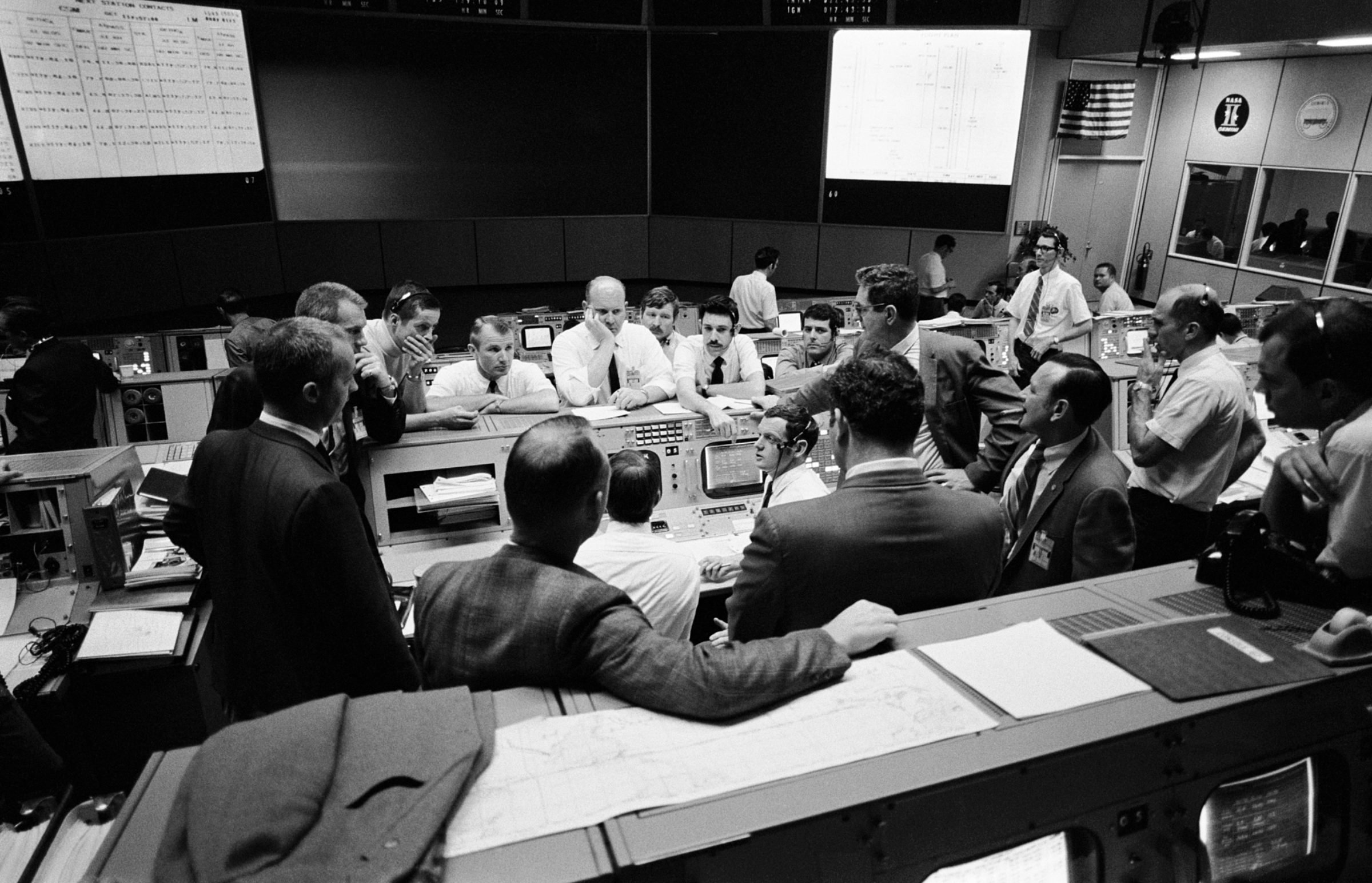
The following hours saw a frantic effort to assess, mitigate, and manage the dangerous situation now facing the crew. The explosion caused a loss of electrical power in the Command Module (CM), destroyed one oxygen tank, and caused a visible leak from the second. Working closely with mission control, the crew rapidly powered up the Lunar Module (LM) and pressed it into service as a lifeboat to provide critical power, guidance, and life-support functions. The CM was subsequently powered down in order to conserve its batteries for re-entry and splashdown.
Three hours after the explosion, the crew used the Lunar Module's descent engine to modify their course to a "free-return trajectory" around the Moon, meaning lunar gravity would slingshot them back to Earth. Another engine burn performed 2 hours after their closest lunar approach shaved an additional 9 hours off their return trip and shifted their splashdown location closer to the United States' naval recovery fleet.
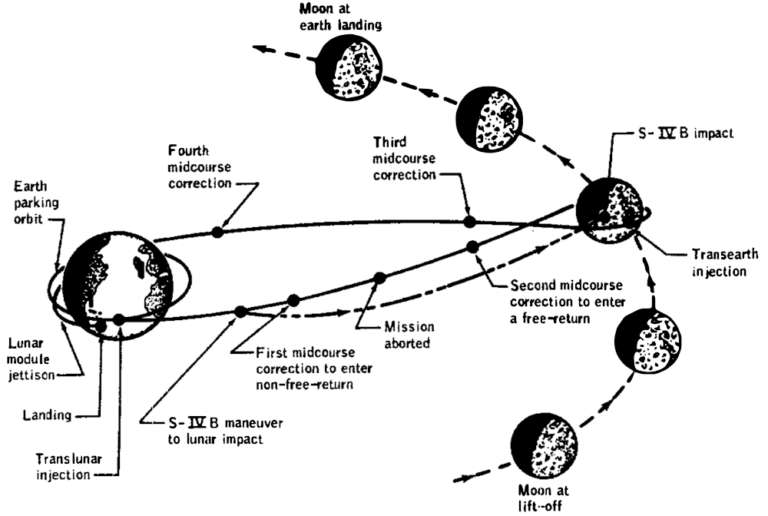
The remaining time spent in the Lunar Module was not a pleasant experience. Originally designed to support 2 astronauts for 48 hours on the lunar surface, the LM had to keep 3 men alive for nearly 90 hours. Power consumption was carefully controlled, requiring the shutdown of every non-essential system such as cabin heaters, lights, and even the guidance computer. Temperatures dropped to around 50 degrees Fahrenheit within the lunar module and in the low 40s within the darkened command module, causing moisture in the air to condense on the frigid control panels and windows. Water lines froze. The crew ate little and slept even less. Upon their return, Lovell, Swigert, and Haise had lost 14, 11, and 6.5 pounds, respectively, over the 6-day mission.

Ongoing problems related to power limits, water consumption, communications, and carbon dioxide buildup plagued the crew and the mission support team, who had to rapidly devise new procedures and rethink their basic assumptions for the capabilities of the Lunar Module. Two further trajectory burns were made while the crew approached closer to Earth.
On 17 April 1970, hours before re-entry, the crew jettisoned the service module from the command and lunar modules. Photographs taken by the crew as it drifted away showed the extent of the damage caused by the explosion. An entire panel of the service module was blown off, exposing the spacecraft's mangled power and life-support systems.
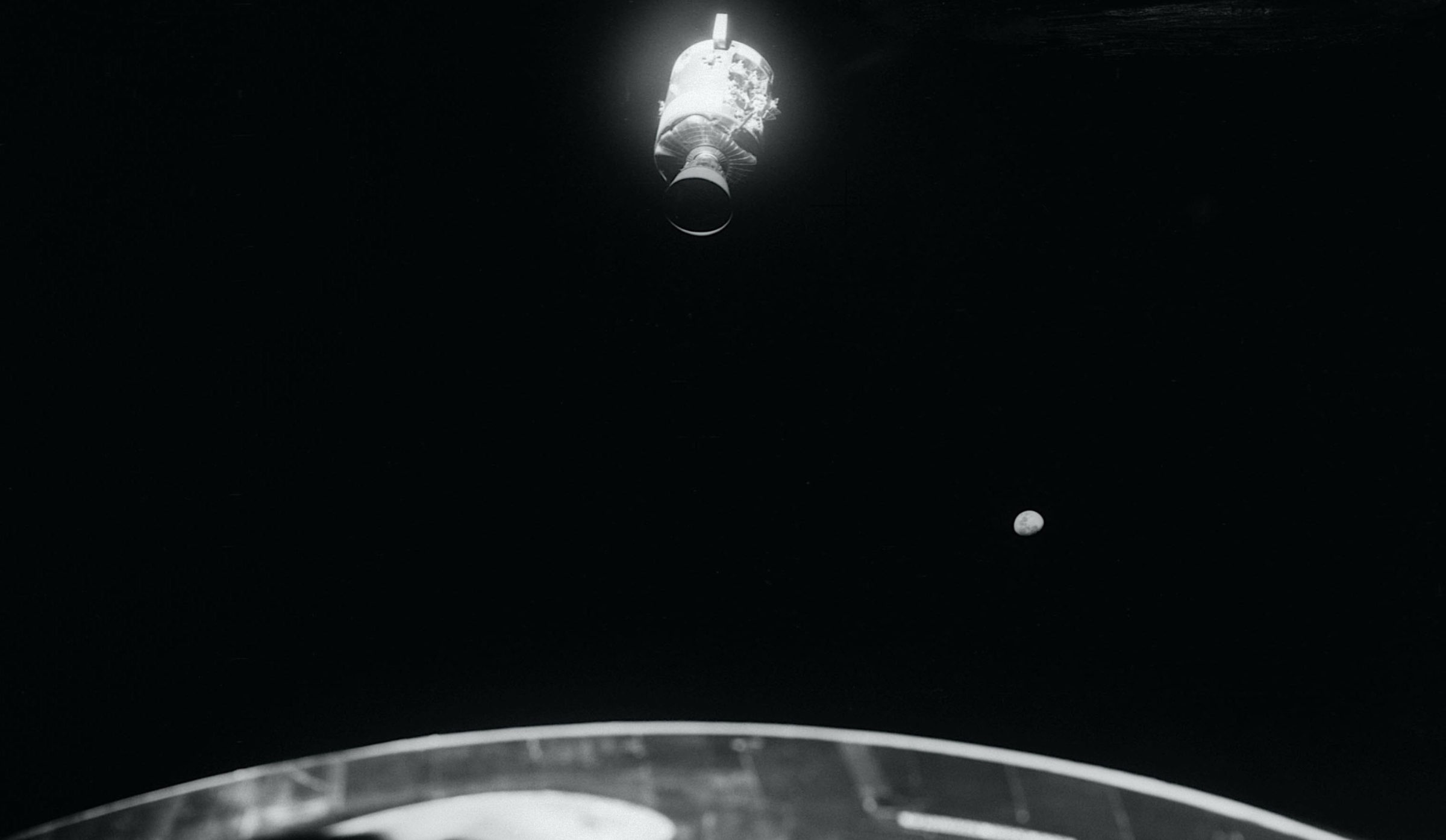
With supplemental power provided by the Lunar Module, the Command Module was powered back up and prepared for atmospheric re-entry. Despite the cold, damp conditions endured during the mission, the CM performed admirably for its final few hours before splashing down into the Pacific Ocean on 17 April 1970, safely returning the crew to Earth 142 hours after launch.
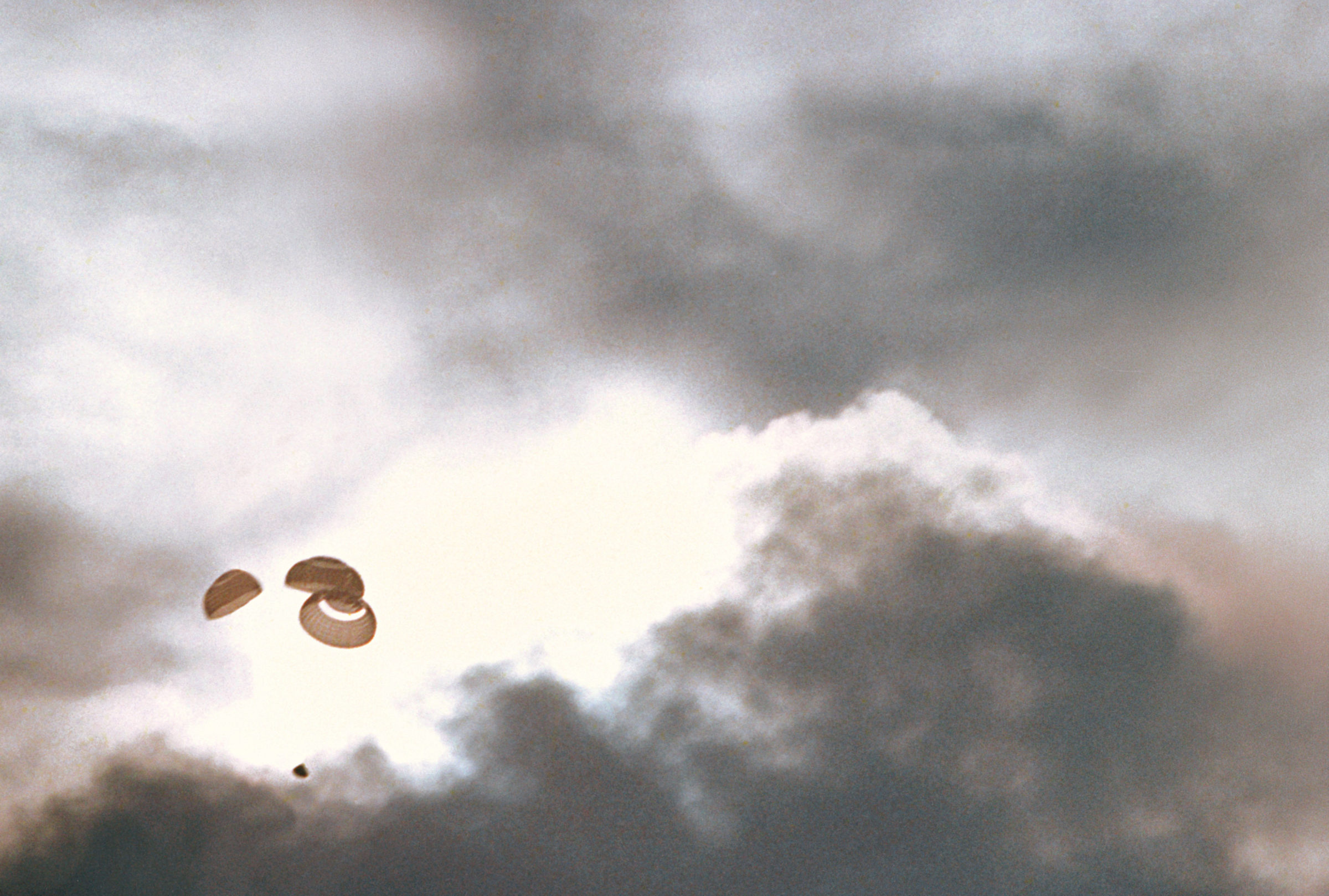
The drama of the mission temporarily re-engaged public interest in Apollo. Though NASA was initially unable to secure airtime on major television networks for the mission's first broadcast prior to the explosion, upwards of 40 million people watched the splashdown live, with many tens of millions more following the news around the world.
Among those closely following the mission was U.S. President Richard Nixon, who met the crew a day after splashdown to award them with the Presidential Medal of Freedom, the nation's highest civilian honor. Nixon later awarded another Presidential Medal of Freedom to the Mission Operations Team at Houston. The close call of Apollo 13 unsettled Nixon about future missions, particularly the risk of a disaster in the run-up to his 1972 re-election effort. As a consequence, Apollo 17—which was nearly canceled—was delayed until after the November elections.
Apollo 13 did serve to reinforce Nixon's opinions on the value of human spaceflight, as Nixon believed that the country needed heroes—and astronauts naturally served that need. Though unwilling to increase NASA's budget, this opinion led him to embrace a lower-risk, lower-cost human spaceflight program based around the Space Shuttle, which he approved in early 1972.
What Went Wrong
After the safe return of the crew, NASA convened a review board to determine the cause of the accident. The committee concluded that damaged insulation around electrical components in the Command and Service Module's (CSM) second oxygen tank caused an electrical short that led to the explosion. The short ignited the oxygen and insulation material. The resulting fire caused a rapid build-up of pressure that destroyed the tank and nearly killed the crew.
CSM oxygen tanks served 3 purposes: to provide air for the crew to breathe and to create power and potable water (when combined with hydrogen) in the spacecraft's fuel cells. These systems required a steady pressure of incoming oxygen to function properly. In order to maintain pressure as oxygen was consumed, Apollo engineers placed heaters and fans inside the oxygen tanks. When switched on, they would warm and circulate the oxygen, increasing the tank pressure and ensuring a steady output of oxygen to the fuel cells and other parts of the spacecraft.
The heaters and fans were necessarily placed in direct contact with the supercooled liquid oxygen that filled the tanks. They were positioned next to a tube called a "capacitance gage" that measured the volume of oxygen, provided access to fill and drain the tank, and fed in electrical wiring to power the heaters and fans. Damage to the heater and fan motor wiring caused the spark that led to the explosion.
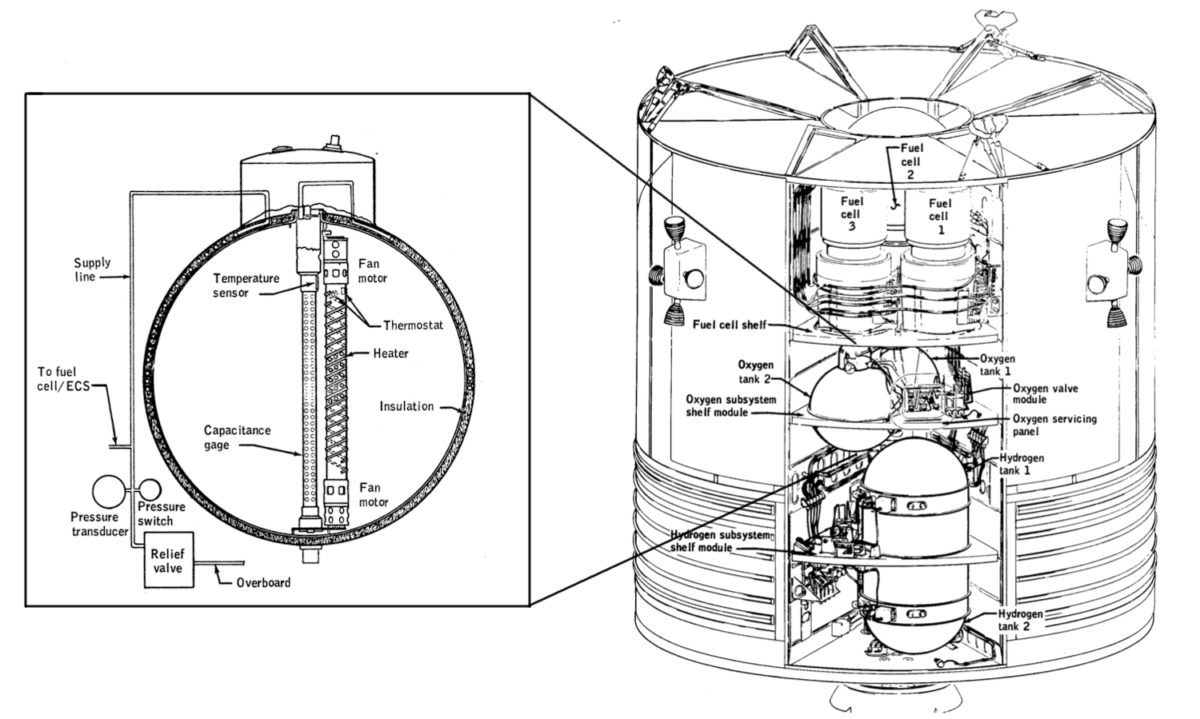
No one person or organization was at fault for Apollo 13's accident. It was a systematic failure by NASA and its contractors, at multiple levels, to detect the problem in advance. The problem itself was subtle and the consequence of 2 unrelated events.
The first event was that the oxygen tank was dropped from a height of about 2 inches during its removal from the Apollo 10 CSM, where it was originally installed for use. Though subsequent inspections appeared to show no damage, the small jolt loosened internal components used to fill and remove liquid oxygen prior to launch.
The 2nd event was the application of electrical voltage on components of the oxygen tank far beyond the level they were designed for, which damaged insulation that protected the wires that powered the internal fans.
Approximately 1 month prior to launch, after the tanks were installed into Apollo 13's CSM, crews at Kennedy Space Center were performing standard tests on the spacecraft's systems, including the loading and emptying out of the oxygen tanks. When the test was completed and it was time to purge both tanks of oxygen, oxygen tank 2, due to its loose fill/drain assembly, did not fully empty out.
Instead of physically removing the tank to address the problem—a time-consuming procedure which could have damaged other systems—engineers on the ground devised a new method to remove the remaining oxygen: turning on the heaters within the oxygen tank to "boil off" the oxygen left in the tank. The risk of this damaging any other systems was thought to be low, as the heaters had built-in failsafes to turn off should they run too hot.
Over the next 8 hours, crews cycled through periods of turning on and off oxygen tank 2's internal heaters to remove the excess oxygen. Though it didn't work well, further analysis suggested that as long there were no issues filling the tanks, everything would work fine in flight, as the spacecraft used an independent system to access the oxygen. The ground crews moved forward with preparing the spacecraft for launch.
Unbeknownst to the ground crew, they had just caused significant damage to the oxygen tank.
The CSM's electrical systems were designed to operate at 28 volts of direct current (DC). Years earlier, however, the project decided that all testing equipment on the ground would feed in electrical current at 65 volts. As a consequence, all components within the spacecraft were upgraded to tolerate the higher voltage—all components except for the failsafe thermostats protecting the oxygen tank's heaters.
During the extended heating period of the near-empty tank, 65 volts of current overwhelmed and melted the protective switches on oxygen tank 2's heating elements. Instead of turning off the heaters at 80 degrees Fahrenheit, as designed, the broken failsafes allowed the internal temperature of the heaters to reach as high as 1000 degrees Fahrenheit—far beyond their designed limits and hot enough to seriously damage Teflon insulation protecting the electrical wiring on the adjacent fans.
After this test, it was only a matter of time before a spark on the exposed wires ignited the dense oxygen within the tank. That time was the 7th operation of the fans, initiated by Jack Swigert 320,000 kilometers (200,000 miles) from Earth.
Apollo 13 Timeline
| Event | Time (UTC) | Date |
|---|---|---|
| Liftoff | 19:13:00 | 11 April 1970 |
| S-II (second stage) center engine premature cutoff | 19:18:30 | 11 April 1970 |
| Earth orbit insertion | 19:25:39 | 11 April 1970 |
| Trans-lunar injection | 21:54:47 | 11 April 1970 |
| S-IVB (third-stage) maneuver to lunar impact | 21:54:47 | 12 April 1970 |
| First mid-course correction | 01:53:49 | 13 April 1970 |
| LOX Stir Command | 03:05:58 | 14 April 1970 |
| Explosion | 03:07 | 14 April 1970 |
| "Houston we've had a problem here" | 03:08:20 | 14 April 1970 |
| Command module powered down. Lunar Module powered up. | 05:53:00 | 14 April 1970 |
| Second midcourse correction to enter free-return trajectory | 08:42:43 | 14 April 1970 |
| Trans-earth injection | 02:40:39 | 15 April 1970 |
| Third midcourse correction | 04:31:28 | 16 April 1970 |
| Fourth midcourse correction | 12:52:51 | 17 April 1970 |
| Lunar module jettison | 16:43:00 | 17 April 1970 |
| Entry | 17:53:45 | 17 April 1970 |
| Splashdown | 18:03 | 17 April 1970 |
Apollo 13 Cost
NASA estimated the following direct costs for Apollo 13. Full costs of the Apollo program can be found on the "How Much Did the Apollo Program Cost?" page.
| original $ | inflation adjusted $ | |
|---|---|---|
| Command & Service Module | $55 million | $463 million |
| Lunar Module | $40 million | $337 million |
| Saturn V Launch Vehicle | $185 million | $1.6 billion |
| Apollo Lunar Surface Experiments Package (ALSEP) | $25 million | $211 million |
| Operations | $70 million | $589 million |
| Total | $375 million | $3.2 billion |
Inflation adjusted to 2019 via NASA's New Start Index (NNSI). Source: "History of Manned Space Flight." February 1975. NASA Kennedy Space Center. Located in NASA HQ Historical Reference Collection, Washington, D.C. Record Number 18194. Box 1.
Resources
Project Apollo
Starting with Apollo 7 in 1968 and culminating with Apollo 17 in 1972, NASA launched 33 astronauts on 11 Apollo missions. Twelve humans walked on the Moon.
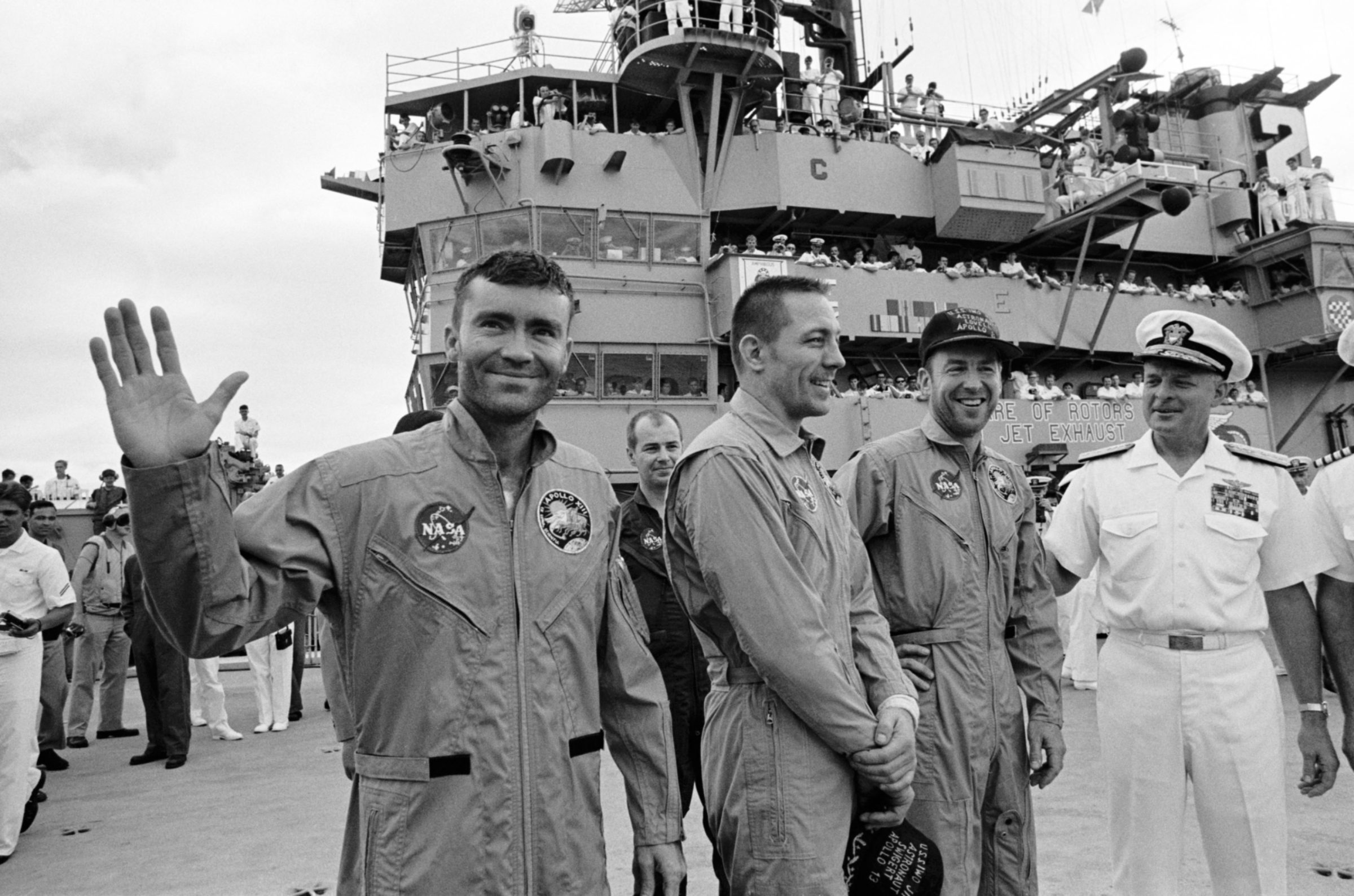


 Explore Worlds
Explore Worlds Find Life
Find Life Defend Earth
Defend Earth


